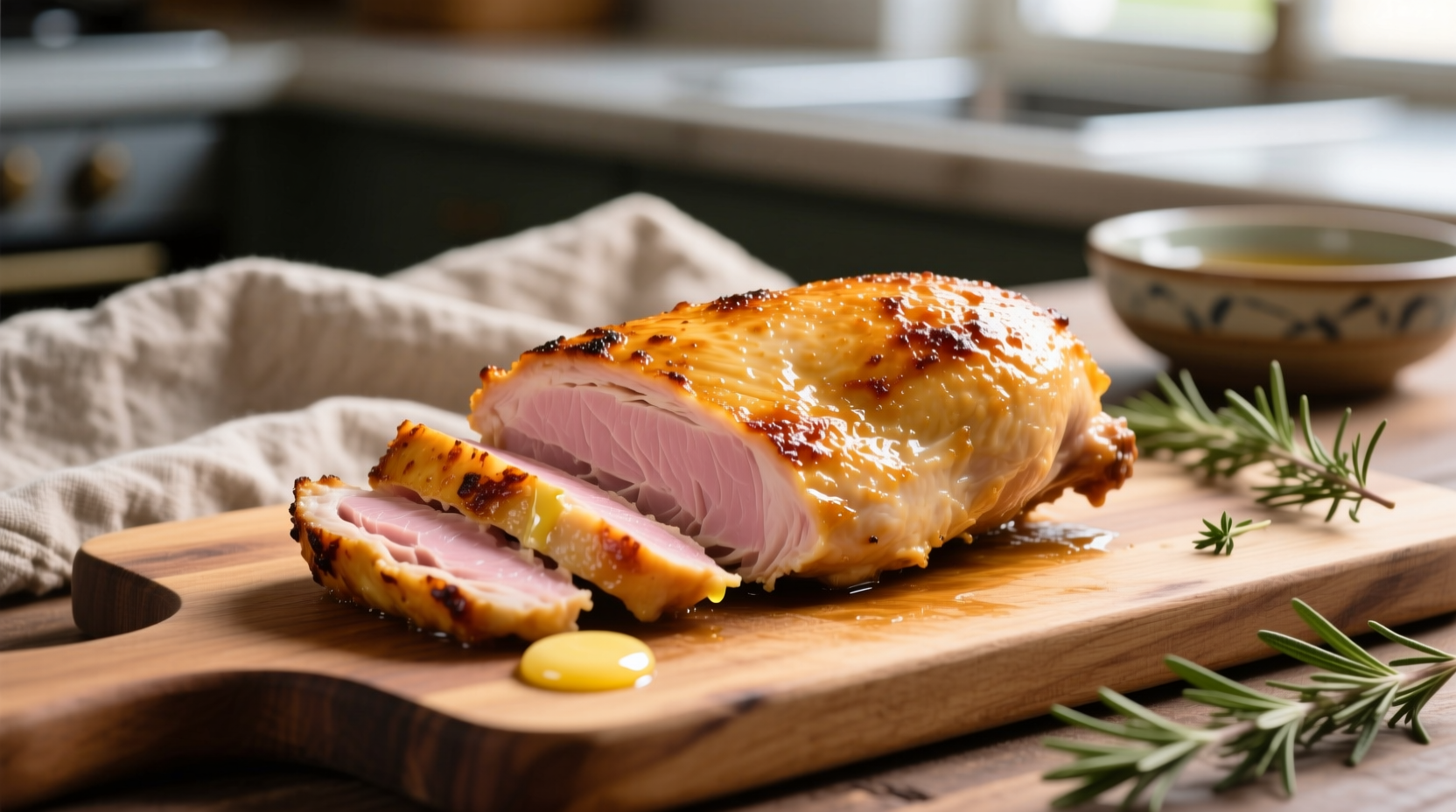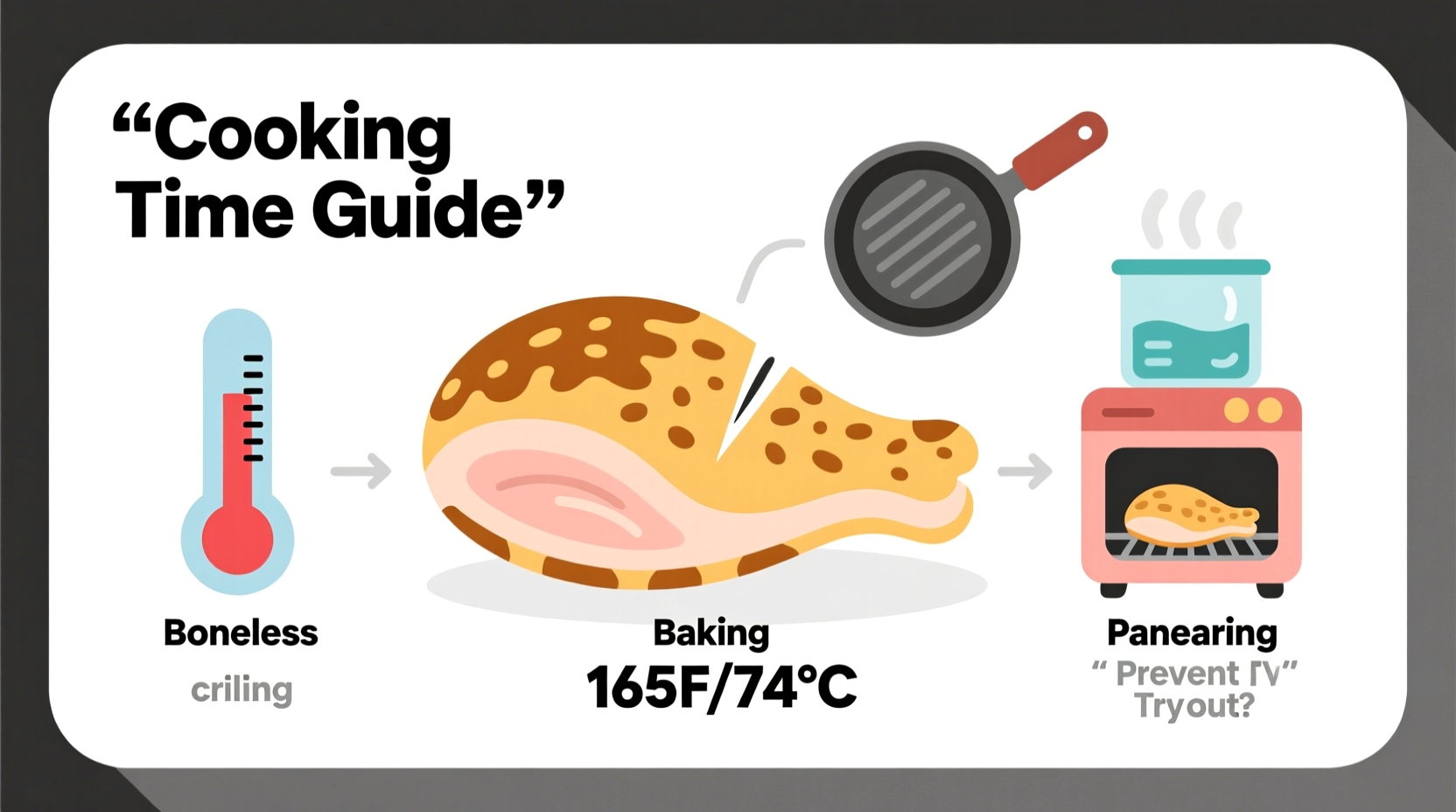The Perfect Timing Guide for Juicy Boneless Chicken Breasts
Nothing ruins a meal faster than dry, overcooked chicken or the risk of undercooked poultry. Getting the timing right for boneless chicken breasts transforms this lean protein from bland to brilliant. Whether you're a weeknight dinner hero or meal-prep master, understanding precise cooking times prevents kitchen disasters and delivers consistently tender results.
Why Cooking Time Varies: The Science Behind Perfect Chicken
Chicken breast don't follow a one-size-fits-all timing rule. The USDA Food Safety and Inspection Service confirms that all poultry must reach 165°F (74°C) to eliminate harmful bacteria like salmonella (source). But the path to that temperature depends on multiple factors:
- Thickness variation: A 1-inch breast cooks twice as fast as a 2-inch "pocketbook" cut
- Starting temperature: Chilled chicken needs 25% more cooking time than room-temperature
- Cooking method: Direct heat (grill) vs. indirect (oven) creates different heat transfer rates
- Equipment differences: Gas vs. charcoal grills and oven hot spots affect results
| Cooking Method | Temperature Setting | Time for 1" Thick Breast | Resting Time |
|---|---|---|---|
| Oven (baked) | 375°F (190°C) | 20-25 minutes | 5-7 minutes |
| Stovetop (pan-seared) | Medium-high heat | 6-8 minutes per side | 5 minutes |
| Grill | Medium heat (350-400°F) | 12-15 minutes total | 5-7 minutes |
| Instant Pot | High pressure | 10-12 minutes + 10 min release | None needed |
Step-by-Step Cooking Process: From Fridge to Plate
Preparation Phase: Setting Up for Success
Proper preparation prevents uneven cooking:
- Thickness matters: Pound thicker breasts to 1-inch uniformity using a meat mallet or rolling pin
- Temperature equilibrium: Remove chicken from refrigerator 20 minutes before cooking
- Dry surface: Pat breasts thoroughly with paper towels - moisture creates steam instead of sear
- Strategic seasoning: Salt at least 45 minutes before cooking for better moisture retention
Cooking Phase: Method-Specific Timing Secrets
Oven Baking: The Hands-Off Approach
Preheat oven to 375°F (190°C). Place chicken on a parchment-lined baking sheet. Bake for 20-25 minutes until internal temperature reaches 165°F. For extra moisture, add 2 tablespoons of broth to the pan before baking. Pro tip: Insert thermometer horizontally from the side to avoid false readings from the pan surface.
Stovetop Searing: Restaurant-Quality Results
Heat 1 tablespoon oil in a heavy skillet over medium-high heat. Sear chicken 6-8 minutes per side, reducing heat if exterior browns too quickly before interior cooks. For thicker cuts, finish in a 375°F oven for 5-7 minutes after searing. The Maillard reaction creates flavor compounds between 285-325°F - crucial for delicious crust development.
Grilling: Avoiding Common Pitfalls
Clean and oil grill grates thoroughly. Cook over medium heat (350-400°F), turning once after 6-7 minutes. Boneless breasts stick less when properly seared - don't force early release. Grill lid should remain closed to maintain consistent temperature. Critical note: Direct flame contact causes flare-ups that char exteriors while interiors remain raw.
Doneness Verification: Beyond Guesswork
Visual cues alone are unreliable for chicken safety. The USDA's Food Safety and Inspection Service emphasizes that only a meat thermometer guarantees safety. Insert into the thickest part:
- 165°F (74°C): Safe minimum temperature (slightly firm texture)
- 150-155°F (66-68°C): For sous vide enthusiasts (requires precise time control)
- Avoid 140°F (60°C) or lower: Risk of salmonella survival
Without a thermometer, check for opaque white color throughout and juices that run clear (not pink). The leg joint test - wiggling the leg bone should feel loose - applies only to whole chickens, not boneless breasts.

Avoiding the #1 Cooking Mistake: Overcooking
Food science explains why overcooked chicken becomes dry. As temperature exceeds 165°F, protein fibers contract aggressively, squeezing out moisture. At 175°F, chicken loses approximately 30% more moisture than at 165°F. This irreversible process happens within 90 seconds - making timing critical.
The Essential Resting Period: Don't Skip This Step
Rest cooked chicken 5-7 minutes before slicing. During this time:
- Internal temperature rises 5-10°F (carryover cooking)
- Protein fibers relax, reabsorbing juices
- Cutting too soon releases 20% more moisture
Cover loosely with foil to maintain warmth without steaming the surface.
Special Considerations: When Standard Times Don't Apply
Certain situations require timing adjustments:
- Frozen chicken: Add 50% more cooking time (not recommended for best results)
- Marinated chicken: Sugar-based marinades may require lower heat to prevent burning
- Stuffed chicken: Add 5-8 minutes to accommodate filling temperature needs
- Convection ovens: Reduce time by 25% or lower temperature by 25°F
Food Safety First: Why Timing Matters Beyond Texture
The Centers for Disease Control and Prevention reports that 1 in 25 chicken packages contains salmonella. Proper cooking time ensures pathogen elimination. Never partially cook chicken to finish later - this creates the perfect temperature danger zone (40-140°F) for bacterial growth.
Proven Techniques for Consistently Juicy Results
Professional chefs use these science-backed methods:
- Dry brine: Salt breasts 1-24 hours before cooking for better moisture retention
- Butter basting: Spoon melted butter over chicken during final cooking minutes
- Temperature-controlled cooking: Use a leave-in thermometer for precise monitoring
- Cut against the grain: Slicing perpendicular to muscle fibers shortens tough strands











 浙公网安备
33010002000092号
浙公网安备
33010002000092号 浙B2-20120091-4
浙B2-20120091-4